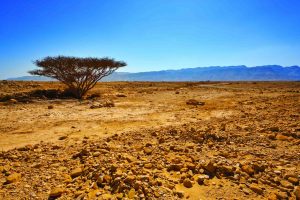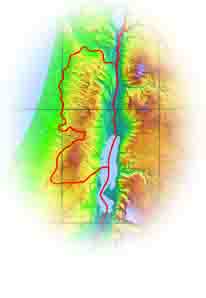×


We have detected your country as:
Please click here to go to the USA website or select another country from the dropdown list.
by: Joshua Spurlock, The Mideast Update

Photo: Gts/ Shutterstock.com
Twenty-three years have passed since the signing of the Oslo Accords, which heralded an official and public Israel–Palestinian effort to reach peace via the so-called “two-state solution.” Israel was to surrender land taken from Jordan and Egypt in the 1967 war to the Palestinians for their state, in exchange for which the Palestinians would stop terrorizing Israelis. It sounds disturbingly one-sided—land concessions to terrorists—but the terrorists acted like they would abide by it.
Instead, Israel has repeatedly made offers of far-reaching territorial concessions—including a complete unilateral withdrawal from the Gaza Strip—and the Palestinians have not only rejected such overtures, but the violence has actually gotten worse since Oslo. In short, the two-state “solution” only created more questions, not answers. As of the summer of 2016, the Israeli government still officially supports the two-state solution and the alternatives listed below are, therefore, not official options. But with a key member of the Israeli government calling for one of them and peace looking further away, it’s past time to consider the other solutions.

Photo: gkuna/ Shutterstock.com
Yishai Fleisher, international spokesman for the Jewish Community of Hebron in Israel, provides an on-the-ground perspective of alternatives to the “two-state solution.” Representing a contested city in the disputed Judea and Samaria region—which the Palestinians call the “West Bank”—Fleisher has more credibility than someone offering solutions from New York, Paris or Moscow. In an interview with The Mideast Update, Fleisher said that people like him aren’t losing faith in the two-state solution; “we never had faith in the two-state solution.” He noted that opponents of the two-state solution have always said it would weaken Israel, be a historical injustice, and “empower the worst” among the Palestinians. So far, that’s what’s been happening and the two-state solution hasn’t even been implemented yet.
What’s more, a key reason for support of the two-state solution looks to be based on a myth. The fear among some in Israel is that without a two-state model, the alternative is one state in which an ever-growing Palestinian population eventually outnumbers the Jews in Israel’s democratic system and takes over the whole nation from within. However, a former Israeli diplomat-turned-analyst, Yoram Ettinger, argued otherwise in an article entitled “Palestinian Demographic Manipulation” which he published in Israel Hayom last July.
Ettinger demonstrates that by counting overseas persons and other number games, the Palestinian “West Bank” population numbers are inflated by more than a million persons. Furthermore, Ettinger says that in the current nation of Israel—including Judea and Samaria—Jews outnumber Arabs 2-to-1, with an increasingly fertile Jewish population. Fleisher agrees, calling the unfounded fears “demographobia.” The alternate answers to the “two-state solution” also address this concern.

Photo: Sadalmelik/ Wikipedia
All the alternates have the same theme: Jewish sovereignty over Judea and Samaria. Fleisher did not say which option is the best and said calling one “right” is “premature and audacious,” but that they should be discussed. If Jews and Palestinians are to somehow live peaceably in the same area, here are some options Fleisher listed:
Fleisher noted there are other options as well, and he further argues that regardless of what happens, Israel would “of course absolutely ensure the rights of minorities; in fact we’re going to treat everyone right.”
Fleisher acknowledges that none of the above options would be easy, and one challenge is selling the plan to the international community. But he believes these alternatives are more honest and ultimately more hopeful than the failure of the past two-decades-plus. He notes that Palestinian leader Mahmoud Abbas hasn’t been a partner for peace so far and he is “not going to become one.” Rather than deceptively promote a plan people know isn’t working, Fleisher says, “Let people understand what the roadmap is… at least [these options] make sense and work on the ground; so let’s get creative and get clarity… Clarity will bring hope.”
All logos and trademarks in this site are property of their respective owner. All other materials are property of Bridges for Peace. Copyright © 2025.
Website Site Design by J-Town Internet Services Ltd. - Based in Jerusalem and Serving the World.